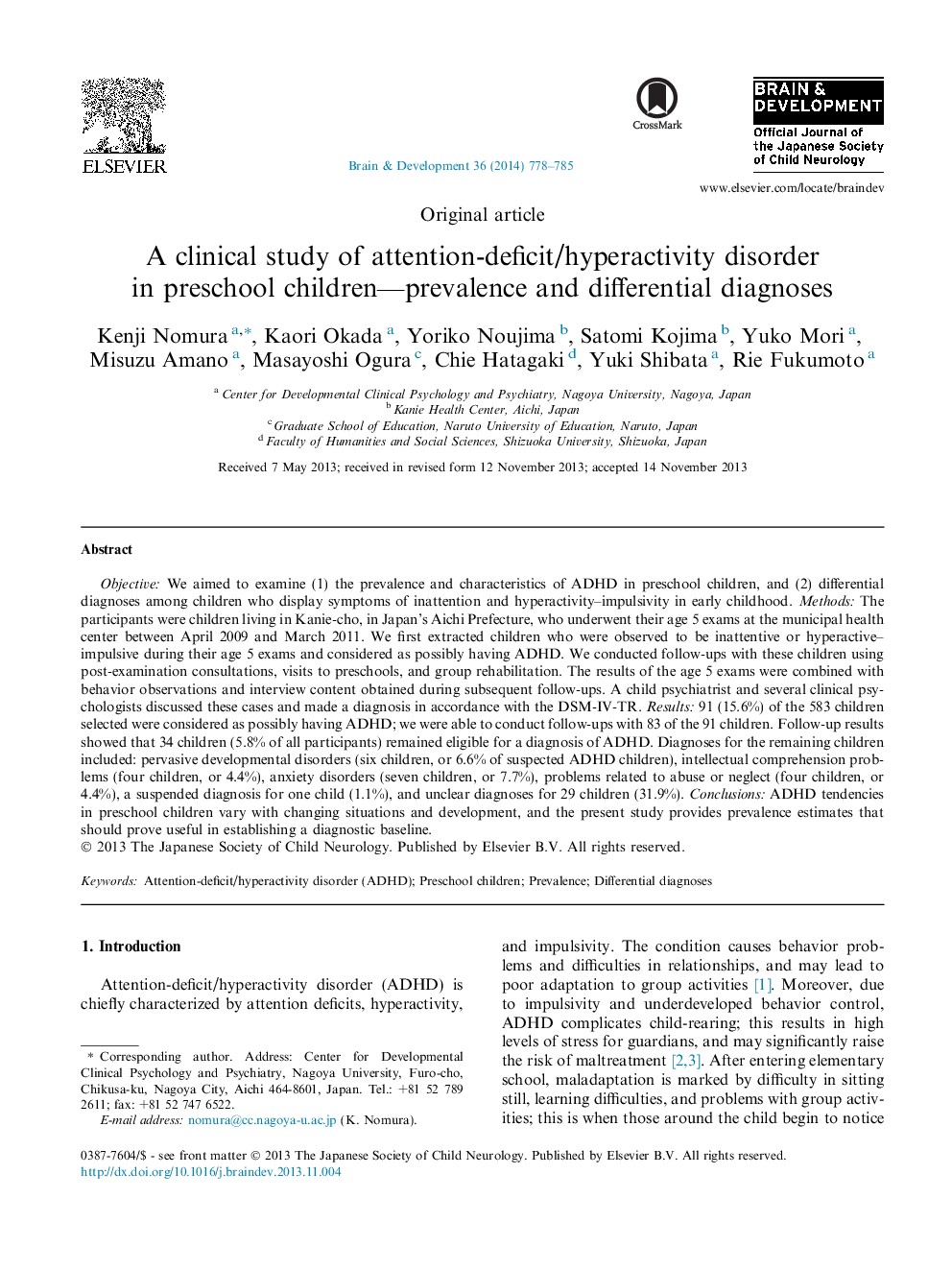| Article ID | Journal | Published Year | Pages | File Type |
|---|---|---|---|---|
| 3036980 | Brain and Development | 2014 | 8 Pages |
Objective: We aimed to examine (1) the prevalence and characteristics of ADHD in preschool children, and (2) differential diagnoses among children who display symptoms of inattention and hyperactivity–impulsivity in early childhood. Methods: The participants were children living in Kanie-cho, in Japan’s Aichi Prefecture, who underwent their age 5 exams at the municipal health center between April 2009 and March 2011. We first extracted children who were observed to be inattentive or hyperactive–impulsive during their age 5 exams and considered as possibly having ADHD. We conducted follow-ups with these children using post-examination consultations, visits to preschools, and group rehabilitation. The results of the age 5 exams were combined with behavior observations and interview content obtained during subsequent follow-ups. A child psychiatrist and several clinical psychologists discussed these cases and made a diagnosis in accordance with the DSM-IV-TR. Results: 91 (15.6%) of the 583 children selected were considered as possibly having ADHD; we were able to conduct follow-ups with 83 of the 91 children. Follow-up results showed that 34 children (5.8% of all participants) remained eligible for a diagnosis of ADHD. Diagnoses for the remaining children included: pervasive developmental disorders (six children, or 6.6% of suspected ADHD children), intellectual comprehension problems (four children, or 4.4%), anxiety disorders (seven children, or 7.7%), problems related to abuse or neglect (four children, or 4.4%), a suspended diagnosis for one child (1.1%), and unclear diagnoses for 29 children (31.9%). Conclusions: ADHD tendencies in preschool children vary with changing situations and development, and the present study provides prevalence estimates that should prove useful in establishing a diagnostic baseline.
